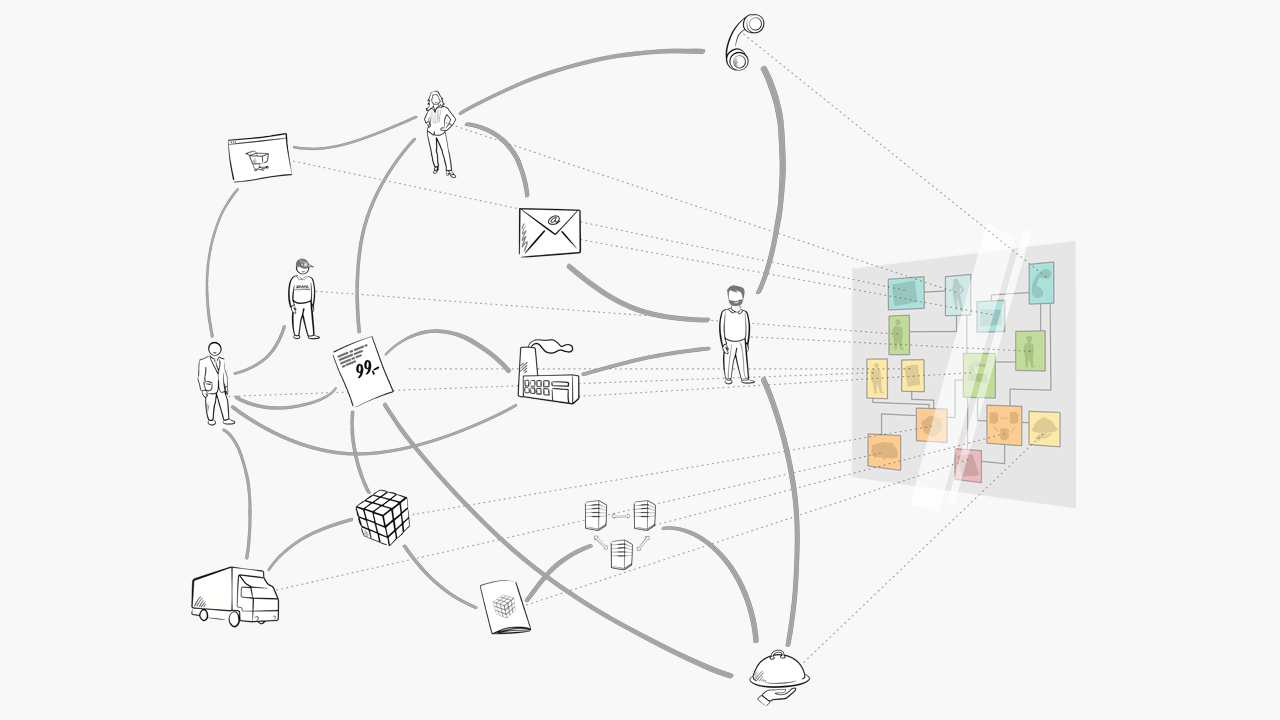Whitepaper information modelling: a fundamental tool for leaders in the digital change

With the information model, Stefan Berner from foryouandyourcustomers has developed a model that addresses one of the greatest challenges of digital projects and, therefore of digital change: it helps people connect the real world to a digital model and make it tangible. The information model, therefore, forms the basis for collaboration and shared understanding in digital change. This white paper describes the simple methodology in detail. It shows how companies, and especially leaders can benefit from using information modelling.
Downloads
No one expects an IT expert to proclaim a method as an elementary tool for leaders. This ‘tool’ looks technical at first glance – partially because it does remind one of a database schema. Upon closer inspection, however, the information model reveals itself as a semantic reflection of real business and its challenges.
The model is based on language, a simple definition of terms and their contexts that is understood and accepted throughout the company. A common, company-wide language is created, which allows the different departments, divisions, offices, regional subsidiaries, and ultimately also the customer to work together more efficiently, which increases quality and leads to better results. It is for this reason that foryouandyourcustomers always starts strategic projects with an information model wherever possible.
A term can have different meanings within an organisation depending on the remit and company level. Information modelling creates clarity.
The information model has been used by us in 14 companies so far; mostly in combination with the Exploded View, and has proved exceedingly beneficial in the process. Use of the model generally triggers a domino effect, and its full power is unleashed piece by piece. Clarifying terminology is usually just the beginning. The knowledge and insights gained from the subsequent work on the model have for many of our clients been the basis for utilising synergies, developing modern business models, changing the way work is distributed and breaking up old organisational structures and recreating them.
The model is a fundamental part of the company infrastructure and, therefore, also a fundamental part of the management system. For this reason, the Executive Board must recognise its relevance and benefits and encourage, support and authorise the use of information modelling in relevant projects by decision-makers and managers.
